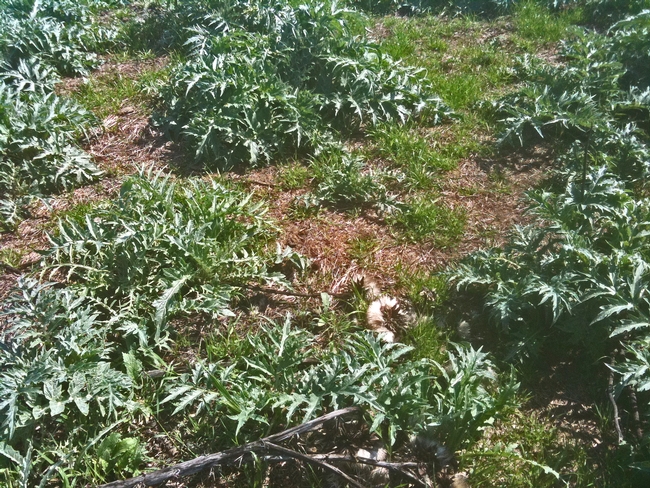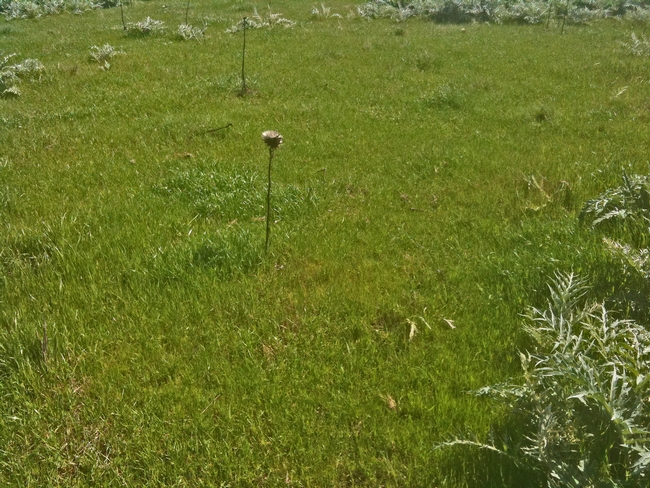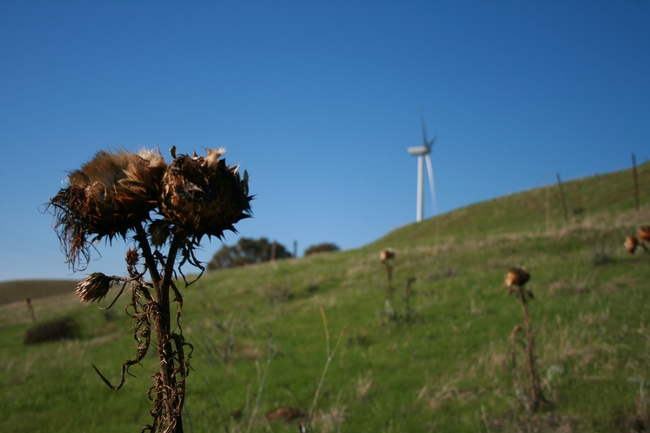Last entry I talked about the problems with artichoke thistle (Cynara cardunculus L.) in the Sacramento Delta and other coastal regions. Again, this thistle was introduced to California as the cultivated artichoke, but escaped to become a serious rangeland weed.
Because stands of artichoke include perennial adults, new seedlings and a persistent seedbank, the best means of control is likely to be broadcast application of a selective herbicide with both foliar and soil-residual activity.
Starting in fall 2010 we tested several such treatments at a dense infestation of artichoke thistle in the Montezuma Hills, Solano County. We made applications at three timings: fall (December 16, 2010), winter (January 26, 2011), and spring (March 17, 2011). At each timing we applied two rates each of Milestone® (aminopyralid), MAT28 (aminocyclopyrachlor), and Perspective® (aminocyclopyrachlor + chlorsulfuron), and a single rate of Roundup Weathermax® (glyphosate) for comparison. Milestone® is an auxin-type selective herbicide registered by Dow Agrosciences in 2005, now widely used for control of yellow starthistle, knapweeds, and other composites. MAT28 and Perspective® are new compounds from DuPont, not currently registered, with selectivity and soil activity similar to Milestone®. Roundup Weathermax® is a nonselective herbicide with no soil activity.
Treatments were applied using a CO2 backback sprayer at 30 psi running a 10-foot boom with six 8002 nozzles. Milestone®, MAT28, and Perspective® treatments included 0.25% v/v Competitor® crop oil surfactant. The spray volume was 20 gpa. Plots were 20 ft by 40 ft in three replications. When we evaluated the plots June 27, 2011, we estimated total cover of mature artichoke thistle plants, number of seedlings per plot, and cover of annual grasses.
Results are shown in the attached table. At all timings Roundup Weathermax® removed the grass cover, opening up the site and allowing increased germination of artichoke seedlings. In the March application, however, this chemical was successful in controlling mature plants and thus could be useful as a late-season spot treatment.

High rates of Milestone® didn’t provide season-long control of seedlings but were very effective on mature artichoke plants in January. High rates of MAT28 and Perspective® provided nearly complete control of both seedlings and mature plants at all timings. Perspective® tended to reduce grass cover, especially in the January timing.

One-way analysis of treatment effects (disregarding time of application) suggests that MAT28 and Perspective®, once registered, may be useful tools for broadcast control of artichoke thistle.

Attached Files: